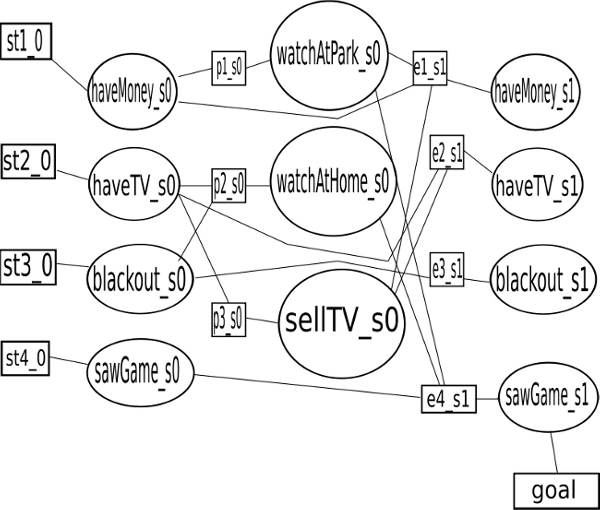|
Back to practice exercises.
1: Background Reading
2: Learning Goals
- Translate a planning problem in STRIPS representation into a CSP planning problem (and
vice-versa).
3: Directed Questions
- What is meant by the horizon in a planning problem?
- What are initial state constraints in a CSP problem?
- What are goal constraints?
- What are precondition constraints?
- What are effect constraints?
4: Exercise: Football Game
There's a big football game tonight, and you can't miss it. You're trying to decide whether to
watch it in person or on TV. Watching it in person requires having some money for a ticket.
Watching it on TV is only possible if you have a TV and there isn't a local television blackout
on the game. If you need money for a ticket, you can always sell your TV.
The following figure shows a CSP representation for this planning problem where the goal is to watch the
game.

- What are the actions?
- What are the state variables?
- What is the horizon shown in the figure?
- Give the truth tables for the precondition constraint for action watchAtPark (labelled p1_s0
in the figure) and the effect constraint between blackout at step 0 and blackout at step 1
(labelled e3_s1).
- What is the minimum horizon needed to achieve the goal, if the start constraints specify
that you have no money and that there is a TV blackout?
5: Learning Goals Revisited
- Translate a planning problem in STRIPS representation into a CSP planning problem (and
vice-versa).
|

